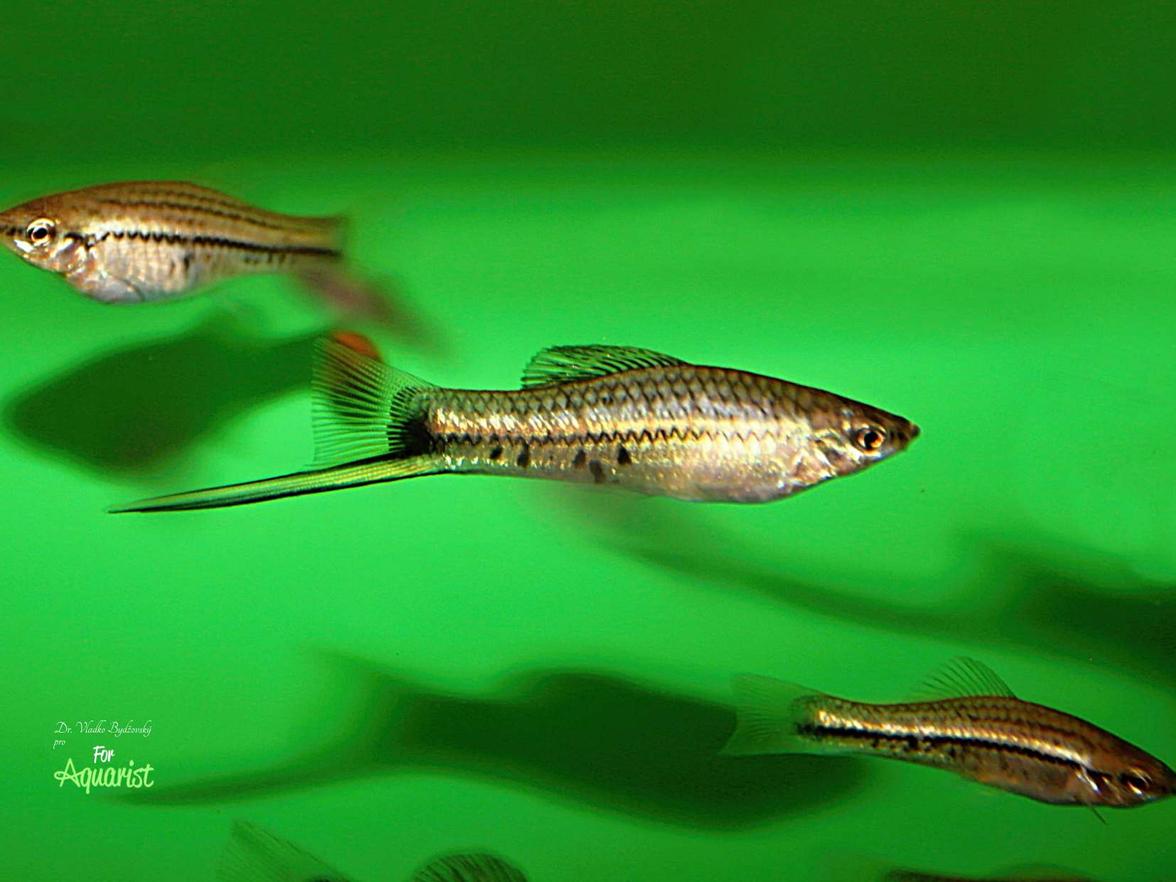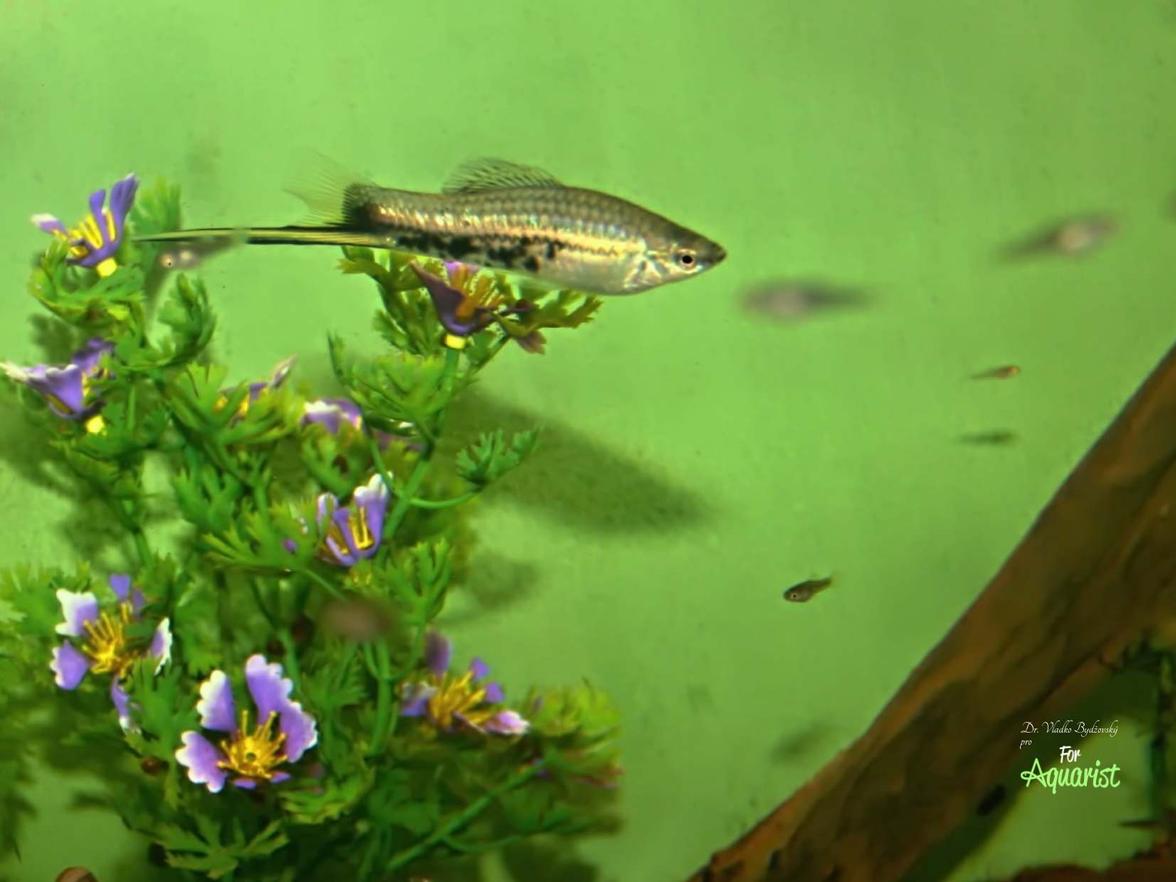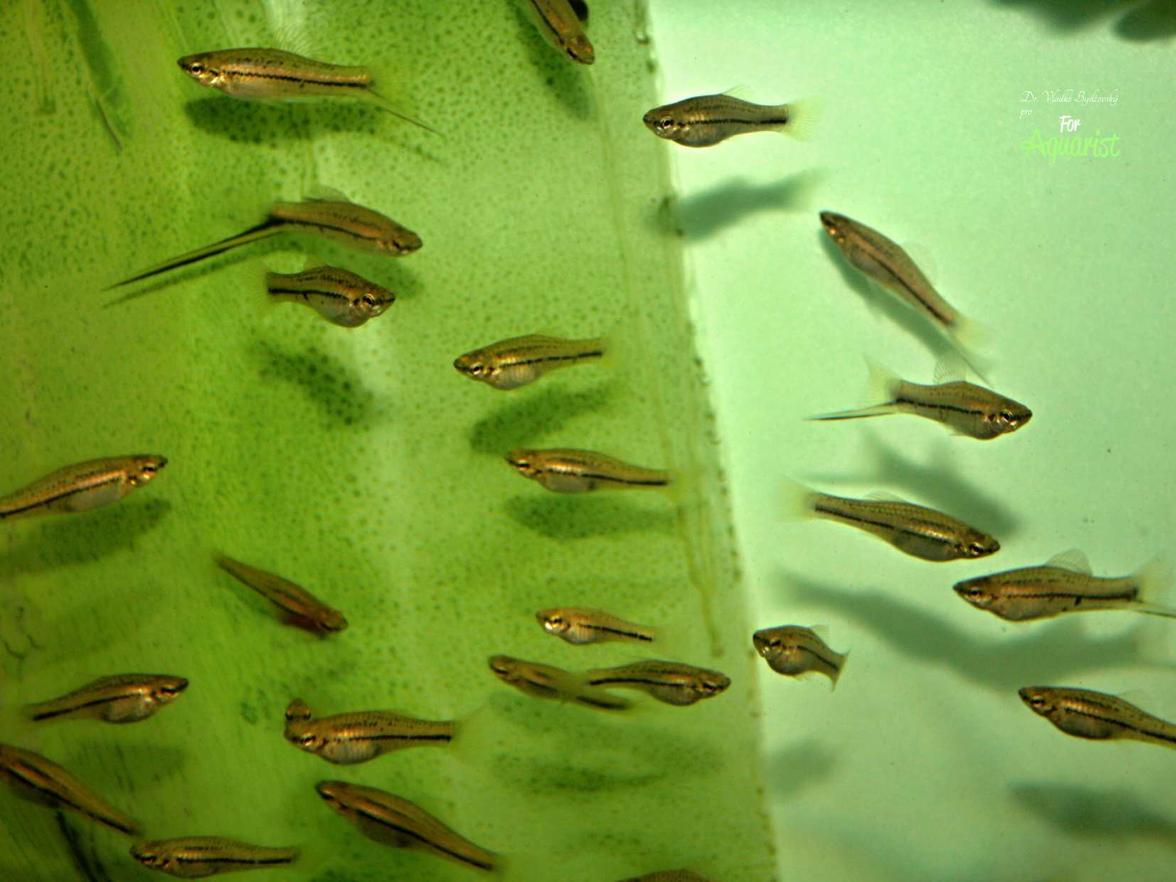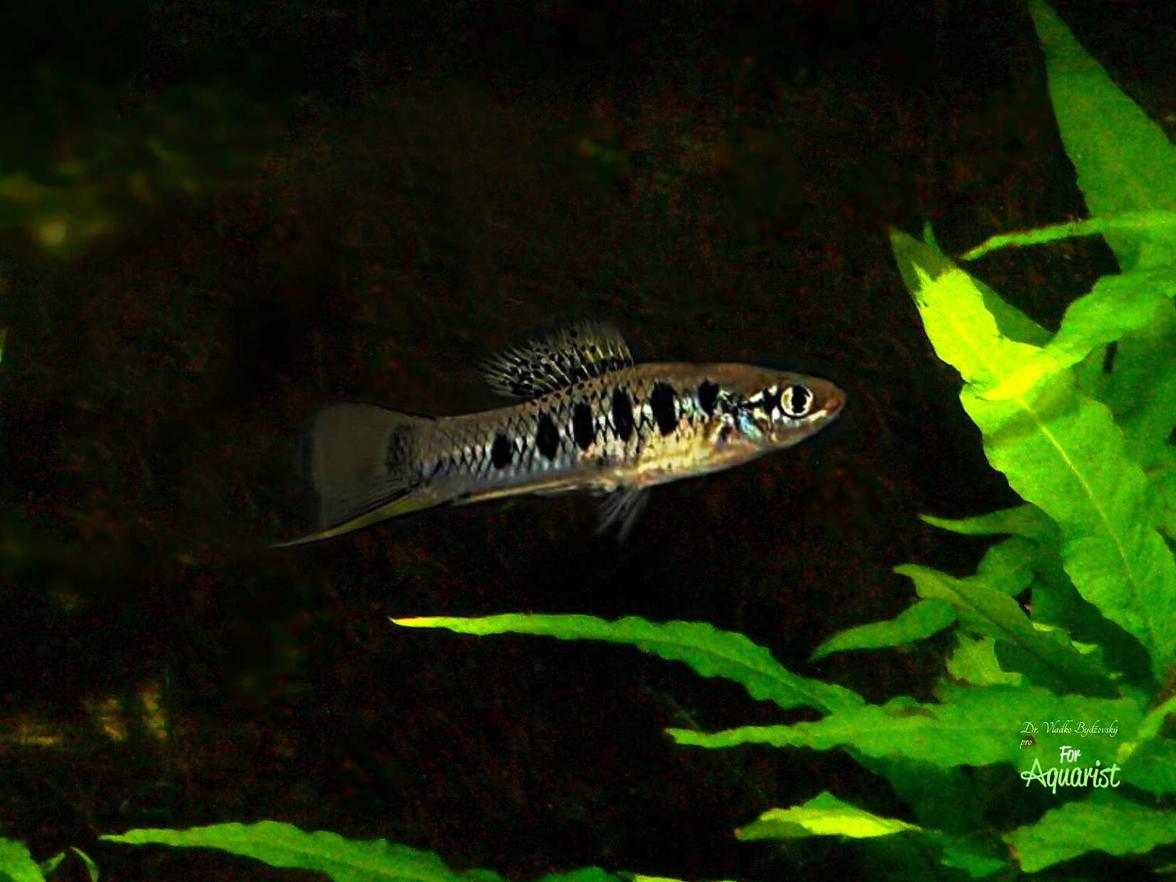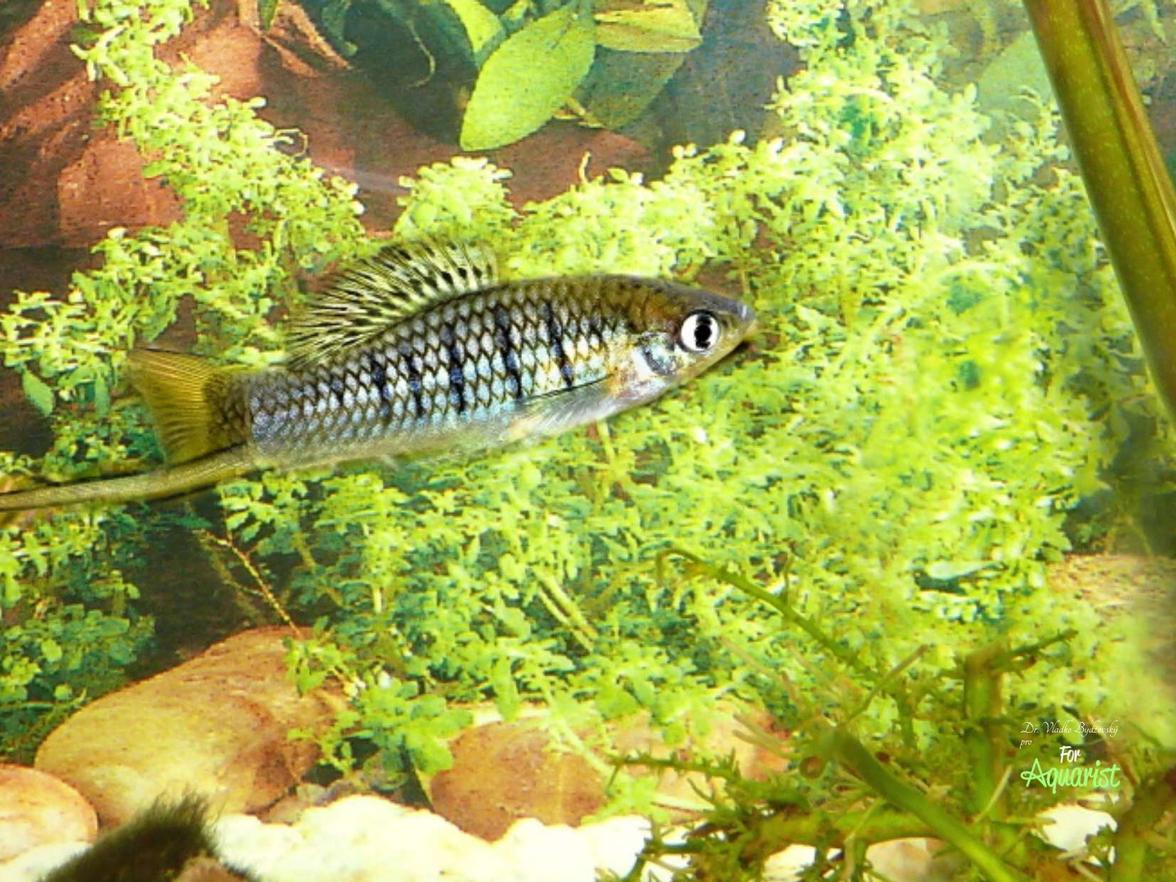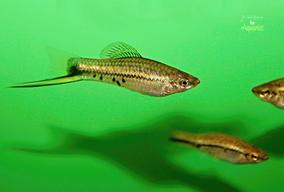Xiphophorus montezumae: The Forgotten Treasure of Mexican Waters
The Montezuma swordtail is one of the lesser-known livebearers in our country, but it is a gem among them. It is imported very rarely, and even breeding is not as productive as we know it from common swordtails (Xiphophorus helleri) or even platies. Occasionally, they appear at markets in Western Europe, from where we can import the fish. Several populations of this species are known, reaching about 7-8 cm in length, and the males' sword is approximately the same length.
Systematics
According to the revision conducted in 1990 by RAUCHENBERGER, KALLMAN, and MORIZOT, the Xiphophorus montezumae-cortezi complex includes a total of 6 species. These are interesting livebearers Xiphophorus birchmani LECHNER and RADDA, 1990; Xiphophorus continens RAUCHENBERGER, KALLMAN, and MORIZOT, 1990; Xiphophorus cortezi ROSEN, 1960; Xiphophorus malinche RAUCHENBERGER, KALLMAN, and MORIZOT, 1990; Xiphophorus montezumae JORDAN and SNYDER, 1900; Xiphophorus nezahualcoyotl RAUCHENBERGER, KALLMAN, and MORIZOT, 1990. These species are most commonly found in the Rio-Panuco-Tamesi basin in northern Mexico.
Homeland
The fish are found in the northeastern part of Mexico, Tamaulipas, northern Veracruz, San Luis Potosí. The basic form occurs in a relatively small area of the Rio Galinas basin at an average altitude of about 300 m in waters that are clear, generally fast-flowing, and relatively cool. In the waters of Tamasopo, various environments are present, including sandy to rocky substrates.
Characteristics
It is a peaceful livebearer that we can keep in larger community tanks. However, caution is advised regarding the presence of the livebearers Xiphophorus helleri, with which they may hybridize. This can lead to individuals that are somewhat larger and more resilient than the original species. It is a fish sensitive to nitrates. Of the entire complex of 6 species of livebearers, the Montezuma livebearers have the longest fin. Males, with good care, can grow up to 8 cm, and the fin is equally long! It is a rather shy species that always takes some time to get used to the environment in which it is placed.
Breeding
A larger and well-planted tank with the possibility of swimming in open space is ideal. Practical are hiding places that can be arranged by adding roots or stones. There, weaker males can hide from dominant individuals. The temperature should be maintained around 20-26 °C, pH 7-8, hardness between 10-20°dGH, good filtration, and regular water changes are a necessity. They are omnivores, and we should not forget about live, frozen, or freeze-dried commercial larvae as well as plant matter. They accept encapsulated brine shrimp nauplii very well and with great appetite.
Raising
With good feeding, the fish do not eat their young. Therefore, it is possible to keep them in species tanks, where representatives of several generations swim together. Another option is to transfer the female to a "breeding box" with a volume of 10-20 l and fine-leaved plants, where she can calmly give birth to her 20-40 young. The gestation period for females lasts about 4-6 weeks, and compared to Mexican livebearers (Xiphophorus helleri), the significant difference is that the females' bellies before giving birth are not as large. The approach to recognizing the birth is more closely related to the darkening of the female's black spot. Further raising does not cause problems. It is better to use fine live food, but high-quality artificial feed is also well accepted.
Images:
- There are two types of male Montezuma livebearers. One is the larger one, which starts to grow its fin later, and the other is the males that have their fin already from smaller sizes. The latter are usually somewhat slimmer in body, and their fin has the length of the entire body.
- Among male Montezuma livebearers, there is a similar rivalry as in related species. The aquarium is usually dominated by the strongest male. Therefore, it is important to have enough hiding places so that the lower-ranking rivals have somewhere to hide.
- With good feeding, Montezuma livebearers do not eat their fry. The fry of Montezuma livebearers mostly swim near plants.
- Raising Montezuma livebearers does not cause problems, but we still have to monitor the optimal water parameters with good filtration.
- Xiphophorus malinche was named after the indigenous woman La Malinche, who played an important role in the conquest of the Aztec Empire.
- Xiphophorus nezahualcoyotl is named after a community in Mexico.
- The Mayans left many "traces" in Mexico, the most famous being in Chichen Itza.
- The waters of Tamasopo are one of the well-known locations for the occurrence of Xiphophorus montezumae.
- In Mexico, there are many waters where a whole range of livebearers live.
